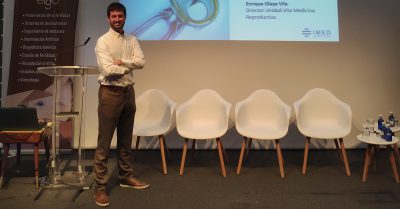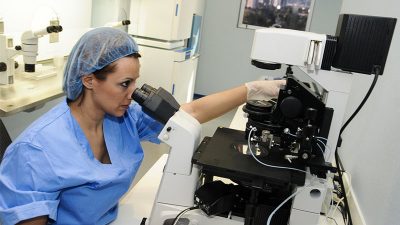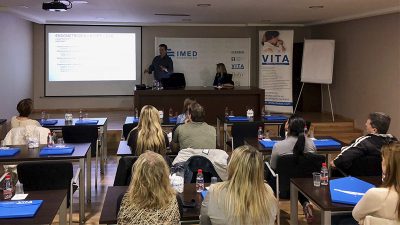Intracytoplasmic sperm microinjection (ICSI)
The Intracytoplasmic sperm microinjection (ICSI) is a technique, within an in vitro fertilization process, that enables the introduction of a single sperm into a mature egg – by means of a fine needle – in order to facilitate the fertilization of the latter. This technique successfully resolves the majority of severe infertility problems of male origin.
At VITA, this technique is used in almost all IVF treatments.
What is intracytoplasmic sperm microinjection?
The steps to follow are the same as for a conventional IVF cycle. Instead of putting in a laboratory dish the filtered spermatozoa in contact with the retrieved eggs, waiting for one of them to naturally & autonomously fertilize the egg, in the ICSI technique the embryologist himself introduces a single spermatozoon directly into each ovule with a microneedle.
In vitro fertilization with ICSI (Intracytoplasmic Sperm Injection) has been used on a regular basis for a few years now, since it successfully resolves most male-caused sterility problems.
The steps before and after insemination are the same as in conventional in vitro fertilization. That is, ovarian stimulation is performed on the patient, the eggs are obtained by follicular puncture after inducing ovulation and the filtered semen sample is prepared.
Using the ICSI technique, only one sperm is needed per egg. In conventional in vitro fertilization, between 50,000 and 100,000 are necessary. Under a microscope, a spermatozoon is directly introduced by the embryologist into each ovule, by means of a microneedle.
Subsequently, fertilization occurs and the eggs that have been correctly fertilized are kept in the laboratory for their evolution to be monitored. The resulting embryos that have the appropriate morphological characteristics will be the ones transferred to the maternal uterus, and if there are spare, they will be frozen.
For whom is this technique indicated?
In vitro fertilization using ICSI is indicated for:
- Cases of male infertility:
- Oligozoospermia or cryptozoospermia: severe decrease in the number of spermatozoa.
- Asthenozoospermia: severe decrease in sperm motility, including samples with total absence of motility.
- Teratozoospermia: high number of abnormal sperm.
- Obstructive azoospermia: complete absence of sperm in the ejaculate due to an obstruction. The most common causes are of genetic or inflammatory origin or failed vasovasostomy.
- Secretory azoospermia: complete absence of sperm in the ejaculate due to a defect in sperm production in the testis.
- Anejaculation: ejaculatory dysfunction caused by retrograde ejaculation or paraplegia.
- Immunological cause: presence of a high number of antisperm antibodies.
- Valuable semen samples: patients who freeze a semen sample before undergoing chemotherapy or radiotherapy, those who undergo semen washing techniques because they suffer from infectious diseases (HIV, hepatitis) or use of donor sperm.
Other causes:
- Long-standing infertility (more than two years of seeking pregnancy).
- Carrying out several cycles of timed intercourse, artificial inseminations and/or conventional IVF without success.
- No fertilization obtained with conventional IVF in a previous cycle.
- Rescue microinjection: microinjection of oocytes due to non-fertilization after conventional IVF.
- In vitro maturation of oocytes.
- Performance of preimplantation genetic diagnosis (PGD).
- Microinjection of vitrified oocytes.
The first ICSI pregnancy was achieved in 1992
In Spain, approximately 80% of the cases are solved by IVF with ICSI and 20% by conventional IVF.
The chances of success are the same as for conventional IVF. The fact that the most influential factor in the results is the age of the mother should be taken into account. In general, the pregnancy rate oscillates around 30-40% per cycle in women under 38 years of age. Above 40 years, the rates significantly reduce (10-15%).
After the transfer, the patient usually waits for about an hour in the room at the assisted reproduction center. If your gynecologist does not specify it, rest is not necessary after the transfer. No study shows that rest increases the chances of getting pregnant. Then, once at home, the woman can lead a normal life.




